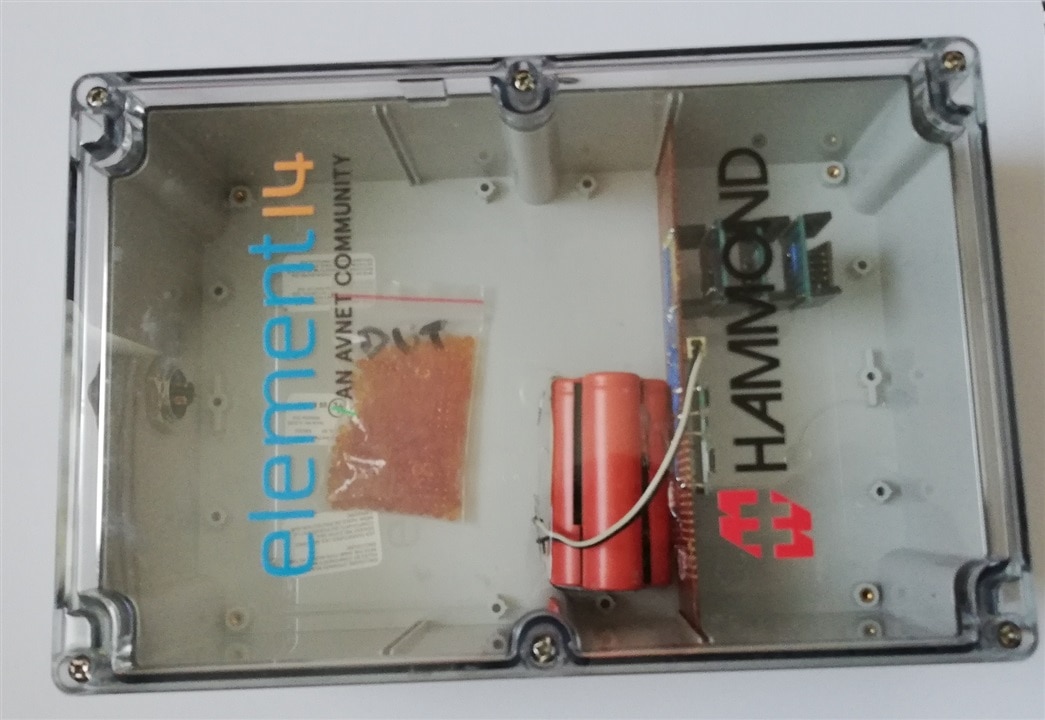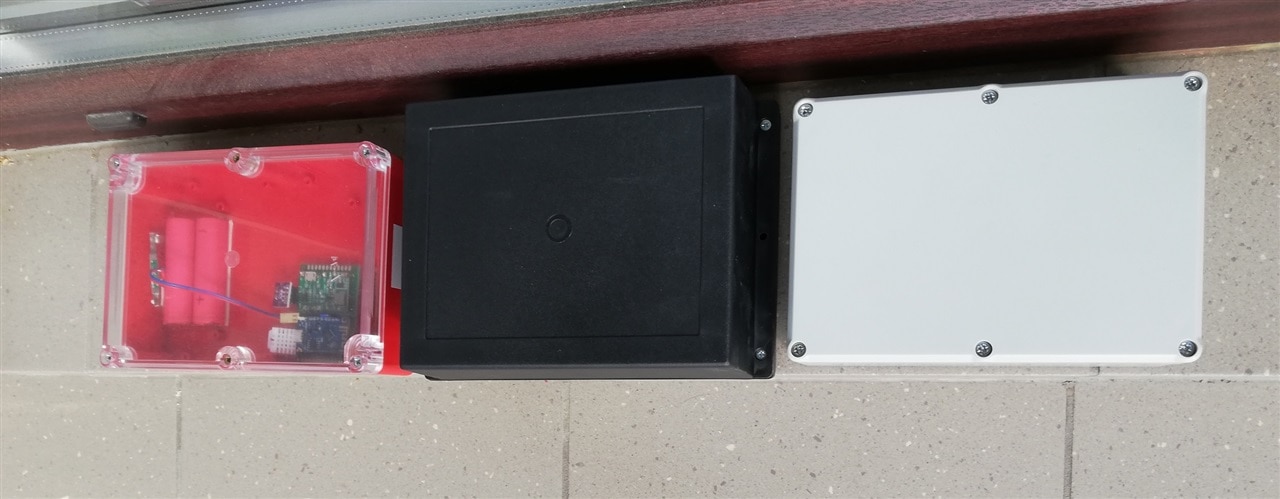Intro
Let's start with the riddle: what is it? A box with transparent top, placed at the backyard in the sunny place?
This?

or maybe this?

Let's check what direct Sun radiation does to our (set of) waterproof enclosure(s).
Black box or white box?
Have you ever wondered why large part of hardware (cables, enclosures) designated for outdoor use is colored black? It seems that one of methods of obtaining UV resistance is an addition of soot, which is as effective as it is inexpensive.
Some time ago I have started a project involving sensor that could be eventually placed outdoors. The sensor was pretty complicated: involved installation of Raspberry Pi and Arduino boards, with addition of moving camera and sensor stand. After some time I have realized that my custom waterproof enclosure is very nice, but black - and black objects are known to absorb more radiation than those of lighter color, which can result in excessive heating and probably malfunctioning.
I have started searching and after some time (it seems that information like this is not very easy to find) I have found information that car's cockpits of dark color during sunny days somewhere in Australia (I think) are getting hotter by about 20°C (if I remember correctly) than more brightly colored ones.
Armed with this information I have promptly painted my enclosure white - but didn't have a chance to test it - the project is still unfinished.
This issue returned last year, when I have accidentally left one of my enclosures in the direct sunlight, only realizing this fact when temperature inside reached about 50°C. Without much thinking I have moved it to the shade and promptly forgotten about it, only to recall it fairy recently as good candidate for this year's testing.
As I already had light grey enclosure (one of my Z74 boxes), black one was needed. I have obtained another waterproof box and fitted it with decommissioned ESP32 sensor left after hardware unification. Construction was rather makeshift, but it was meant only for one test, so I have decided that it would suffice:

then some of the enclosures were located in the place where they could be subject to the direct Sun radiation

and testing began. First let's see external temperature variation (from METAR data [purple dots] and two local weather sensors)

as we can see - nothing extreme (maximum temperature about 25°C) with one exception - where probably sensor got partially exposed to the sunlight.
And how about our enclosures?

as we can see - during direct sunlight, light grey enclosure internals (top yellow line) heated to max. 51.4°C, and black one (top purple line) to 67.6°C - more than 15°C hotter than a grey one and about 40°C hotter than external air temperature.
Greenhouses and other boxes with transparent lids
And what about enclosures with transparent lids? Let's first look at the data from the red enclosure with transparent lid (yellow dots at the top).

this one heats to about 80°C (to be more precise: 78.3°C was measured) - more than the black one. Maybe because red is a pretty dark color? What about our Hammond 1554VA2GYCL? It is rather light colored - maybe heating will be not as great? Our test enclosure joined the test:

and...

as we see (for clarity only external temperature and two transparent enclosure series were left - Hammond is blue and red Z74 is yellow) - transparent lid makes perfect greenhouse, and the color of the bottom is of lesser importance.
Surprises, surprises
After the test series I have encountered something strange - waterproof connector installed in Hammond enclosure had it's protective cap opened

strange - isn't it? Correlating this fact with internal temperature and pressure readings (temperature - blue, pressure - orange)

can be interpreted like this: during initial heating phase, temperature inside rose and with rising temperature, rose internal pressure. Then something happened, pressure rapidly lowered and stayed low despite temperature changes. There is a possibility that protective cap was blown open by the internal pressure, and - as we know that our connector isn't waterproof when left open without a plug installed, from this point external air entered and leaved freely, keeping constant pressure despite temperature changes.
EDIT (2024.05.27)
Solar radiation test was repeated and every day of the test (two sunny days in the sequence), connector de-capping was observed, so it seems to be a valid and repeatable observation. The next question is - if it is a feature of this one connector piece? I have another one, so I can swap them and test again.
EDIT (2024.05.29)
After swapping MRD-BG04 sockets between two enclosures (one from current challenge and one from last year's) test was repeated and the result is the same - it seems that when temperature rises sharply, internal pressure forces protective cap open (had two opening events during two day test). Another - reference - enclosure, purposefully depressurized, is not displaying this behavior.
Conclusions
This part has shown that:
- enclosure color is important - inexpensive outdoor ones are usually black, but it can lead to excessive heating under direct sunlight,
- transparent lid is even greater factor of excessive heating - with no observable difference caused by the color of the rest of the enclosure,
- under direct sunlight, there is high probability that Raspberry PI CM4 will not function properly - I have measured that it's CPU is working at about 25°C above ambient and it starts throttling when it reaches about 80°C,
- there is a probability that in some cases connector lid can be opened spontaneously by the internal pressure buildup, ruining waterproof characteristic of the installation - additional tests are needed, as there was only one observation of this phenomenon

